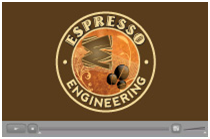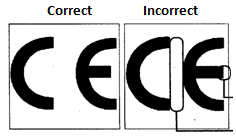| "Packets" - Regulatory Updates for the Wireless Industry | Issue 17 | | | | 
Summer 2010 
R&TTECA – Notified Body group for the R&TTE Directive
(Report from semi-annual meeting in Prague, Czech Republic)  | Our very own Michael Derby, well- ensconced in Winchester, England and well- connected to the European Regulatory Scene provides this PACKETS' update on matters of regulatory interest. Michael performs reviews of RF devices for compliance with FCC, Industry Canada and CE Marking requirements. He provides training and will be coming to Boston in September to participate in the Washington Laboratories Academy Training Program, September 22 and 23. You can also meet Michael and hear him presenting about the R&TTE Directive at this year’s EMC UK Exhibition, 12th and 13th of October. For more details or clarifications, please contact Michael Derby. |
| | | | | 
A new version of REC 70-03 has been released. This is a critical document that lays out the frequency band and power limits for short range devices (SRDs) to be placed on the European Market. It can be found at the ACB web site. Read REC 7003 to view and/or download. 
The New R&TTE Directive: Wherefore Art Thou? The New R&TTED was hoped for 2010 but now looks like 2011 (late 2011). The new Directive will most likely have a new directive number and no longer be 1999/5/EC, so manufacturers' DoCs will need to change. It will still follow the 'DoC' approach but it will implement the New Legislative Framework (NLF) and terminology will change. Working Groups Several working groups have been established at the European Commission with various assignments. This is a summary of the WG's tasks and progress. Read about EU workgroups 
Installation 'Loophole' We discussed a possible loophole in assessments of radio transmitters. An installation (such as a building) is required to meet the EMC Directive using good engineering practice and it is required to not cause interference. However, the building or installation does not need to be specifically CE Marked under the EMC Directive. Radio apparatus are specifically addressed in the R&TTE Directive. Read about installation loopholes 
CISPR 32 and CISPR 35:
CISPR 32 (Multimedia Equipment, Emissions) and CISPR 35 (Multimedia Equipment, Immunity) standards are in progress. CISPR 32 is due out soon. There is less progress with CISPR 35 but it will be with us. CISPR 22:
An amendment is expected, to clarify average emissions measurements above 1 GHz. Also, clarifications on the requirement Read about CISPR 22 
Proposed Requirements for Renewable Energy Sources The committee is considering the requirements for equipment that 'gather' power and convert it to AC and supply it back to the mains, such as solar panels and wind turbines. ErP and ErP Directives: Opportunities? The EuP and ErP Directives were suggested as business opportunities for test labs who would like to expand their scopes. Not many labs are involved in these requirements but Read about ErP directives back to TOP Read the full issue of our industry newsletter for engineers | | Special Updates from The Espresso Engineering team at the 2010 EMC Symposium 
It's almost like being there, except for the sun and sand. Join Coco Bean and the rest of the crew in Sunny Fort Lauderdale.
|
ATCB & Washington Labs team to present Radio Approvals Workshop. September 22-23. Boston, MA | 
| Join ATCB experts Dennis Ward and Michael Derby for a comprehensive overview of methods and requirements for FCC, IC and EU Radio Regulations. This seminar will cover the testing, evaluation and certification requirements for commercial equipment with demands for EMC compliance. Specific focus on radio regulations compliance for products bound for global markets. Visit Washington Laboratories |
International Approvals
Confused about China? Befuddled over Brazil? Hungry for Hong Kong? Our International Approvals team is ready to assist! With a team that spans 24 time zones, we can get that critical approval you need to ship your device. With offices in North America, China, Taiwan and the UK, we can get the access you need. |
The Value of Independent Testing
The American Council of Independent Labs (ACIL) has just completed its first-in-a-series view of the Role of Independent Testing. Watch it on Espresso Engineering
 |

In our business, standards are everything.
If it weren’t for standards, chaos would ensue. Hence, it is of prime importance that we observe certain cornerstones of societal well-being. Standards should be referenced often and certain minimums upheld, as detailed Read about Martini Standard. Although this standard is over 40 years old, timeless principles still apply - one being that British brands hold sway in our Global Village. |
|
The New R&TTE Directive: Wherefore Art Thou? The New R&TTED was hoped for 2010 but now looks like 2011 (late 2011). The new Directive will most likely have a new directive number and no longer be 1999/5/EC, so manufacturers’ DoCs will need to change. It will still follow the ‘DoC’ approach but it will implement the New Legislative Framework (NLF) and terminology will change. Working Groups Several working groups have been established at the European Commission with various assignments. This is a summary of the WG’s tasks and progress. WG NLF All Directives must align with the New Legislative Framework (January 2010). As the R&TTE Directive is being re-written, it is important to ensure the new version complies with the NLF requirements. (Examples include: Cross border communication with regard to market surveillance and accreditation of assessment bodies, referring to the examination and documentation process as a “Type Examination Certificate” instead of a “Notified Body Opinion”, correct application of the CE Mark and Notified Body number, etc. No more annexes, modules instead) The NLF will have a fairly wide-ranging effect as older requirements are tweaked to comply with the NLF. WG TRAC A problem exists with tracing the person who signs the Declaration of Conformity (DoC). Several suggestions have been made, including a registration system for manufacturers selling into Europe. This working group is looking to find a solution to the issue. Many manufacturers are strongly opposed to the registration system and it has been a source of great debate over the last year. Although the final answer is not yet known, it does seem that the European Commission is beginning to feel it would not be the best solution. WG Subclasses Working to find a way to improve the ‘Class 1’ and ‘Class 2’ system in Europe, often referred to as harmonised or non-harmonised devices. WG Innov Looking at ways to help new and innovative equipment onto the market. This is the main purpose of the Notified Body but there are problems with the process because often it is felt that Notified Bodies do not always have all the information relating to spectrum use in each country. Wireless Chargers If a device transmits a CW signal to charge a battery and there is no communication, then it is excluded from the scope of the R&TTE Directive. However, if it has some ‘handshaking’ with the device being charged (to know what it is charging), then it is a radio communications device and the R&TTE Directive applies. In theory this may sound like no big deal. After all, it must still demonstrate good EMC, safety and interference performance (no different than if it followed the EMC and Safety Directives). However, under the R&TTE Directive, it would need to consider spectrum allocation and use of frequency bands. A manufacturer would need to do country notifications for non-harmonised use of bands, etc. , so the administrative overheads increase. A suggestion has been made to exclude wireless chargers from the R&TTE Directive and a list of ‘exclusion parameters’ were proposed (for example, communication distance less than 10cm, low power, etc.). However, many times have we seen exclusions written for one piece of equipment and then been surprised at how technology evolves. Think about how many times you have been in a meeting that starts with the words: “When we wrote the document, we had no idea that the technology would move in this direction”. If we make the exclusion list too general, there could be confusion. Could RFID then be excluded from the R&TTE Directive? How about wireless chargers that can still charge at 11cm distance? Most people agree that a solution is needed but any exclusion would need to be clear, if it is to happen. The debate rages on and a solution is not yet in sight! The next meeting of the R&TTECA is planned for Portugal, in November 2010. back to TOP ECANB – Notified Body group for the EMC Directive Installation ‘Loophole’ We discussed a possible loophole in assessments of radio transmitters. An installation (such as a building) is required to meet the EMC Directive using good engineering practice and it is required to not cause interference. However, the building or installation does not need to be specifically CE Marked under the EMC Directive. Radio apparatus are specifically addressed in the R&TTE Directive. However, a radio transmitter which is integral to the workings of an installation may be avoiding assessment. It may not be assessed by the R&TTE Directive because it is not a radio apparatus. It will need to meet the ‘good engineering’ requirements of the EMC Directive but there are no spectrum allocation or band assessment requirements in the EMC Directive. This loophole was never intended and a solution is being considered. The Digital Dividend Perhaps the second biggest issue being discussed at EMC meetings these days. Televisions are receiving digital signals and the analogue TV bands are being auctioned off at good prices. It looks like the 700/800 MHz bands will be used by LTE telecommunication devices, which is great, however, the domestic TV receivers are still open at those frequencies and have undergone no specific testing to deal with immunity to LTE signals. The very real concern is that soon we will have a network in Europe which interferes with everyone’s television set (and it’s nearly time for the new season of X-Factor!) There is a lack of definitive proof but most are convinced that a problem is looming. It could take years to create some tests and issue a harmonised standard for television receivers to demonstrate immunity to telecommunication signals at adjacent channels or within the receiver operating band. In the mean time, television manufacturers are encouraged to investigate ways to deal with this potential interference. A Notified Body should be cautious about issuing an opinion for a television if the manufacturer or lab has not done ‘something’ to show some immunity. Power Line Communications (PLC) Perhaps the biggest issue being discussed at EMC meetings these days. PLC, Power Line Communication, Power Line Telecommunications or Communication over power lines. Call it what you like, though make sure you whisper. It comes under the EMC Directive and looks likely to cause interference, especially to amateur radio users. The concern is that the needs of the many will outweigh the needs of the few. That may sound ok to some of you, except that the few have been around for a lot longer than the many and, well, it’s not very fair is it. Military Equipment & the CE Marking I attended a presentation about a clamping down on equipment being ‘exempt from the requirements’ because they are considered military equipment. (In fact, they are not specifically ‘excluded’, they are just not specifically ‘included’) It seems that many people use the military excuse to avoid the CE Marking requirements. There’s an old saying regarding regulatory compliance: “Just paint it green and you don’t have to do anything” It seems many things were getting by without a CE Mark in this way. This is not to say that no testing or evaluation was being performed, just not the CE Marking requirements. A tightening up of the requirements was discussed. In particular, the group discussed the classification of devices as ‘munitions of war’. If an electric hand dryer is intended to be used in Army barracks, is that really classified as munitions of war? This topic is provided as guidance only at this time. My favourite quote on the subject came from the Netherlands, with words to this effect: ‘If you drop a nuclear bomb on Amsterdam, I don’t expect it to have a CE Mark. However, if you put a tank on a military truck and drive it down my freeways in peacetime, I do expect it to meet our automotive requirements.’ Ultimately, military devices are tested, often rigorously, to military standards. Manufacturers of military equipment may worry about additional requirements on top of what they already do. However, the addition of a few regulatory compliance tests may be a drop in the ocean compared with the scope of their existing test requirements. Also, they may be able to take their existing assessment and use a technical documentation route to demonstrate compliance. back to TOP Other Issues – Arising from other groups and meetings in Europe NLF and Market Surveillance The NLF has been implemented since January 2010. Each European member state is to do market surveillance. Some countries have picked a technology to focus on (for example: cellphones, domestic electrical entertainment systems, etc.) but other member states may focus on administrative issues such as correct CE Marking and labelling. Products are often incorrectly labelled with a CE Mark which does not meet the requirements of the Directives. This may be addressed by some of the market surveillance work. It is important to remember that an incorrect CE Mark is an infringement of the requirements of the Directive. Consider the attached demonstration and you will easily find incorrect CE Marks on devices: 
EMCTLA (EMC Test Lab Association) Michael attended a recent meeting of the EMC Test Lab Association and jotted down a few Notes and Comments. A NEW EMC DIRECTIVE in the Pipeline The EMC Directive will need to be amended to align with the New Legislative Framework (NLF). It is intended to keep the same essential requirements and even to keep the same Directive number, 2004/108/EC.. For this reason, a manufacturer’s DoC should not need to be amended to reference a new Directive number. back to TOP STANDARDS UPDATE CISPR 32 and CISPR 35: CISPR 32 (Multimedia Equipment, Emissions) and CISPR 35 (Multimedia Equipment, Immunity) standards are in progress. CISPR 32 is due out soon. There is less progress with CISPR 35 but it will be with us in the future. CISPR 22: An amendment is expected, to clarify average emissions measurements above 1 GHz. Also, clarifications on the requirement for one measurement only, for AC Emissions measurements on a cabinet with one AC Mains input. CISPR 24: An amendment is expected, to re-write and clarify the telecoms section. CISPR 11: The 2009 version is published with an amendment to include the following main points: Group 1 and Group 2 equipment defined, where Group 1 are ISM devices using RF for their operation or function, whilst Group 2 devices generate RF only for their internal functions. A Class C limit has been introduced for higher power apparatus (most would have their own dedicated sub-station). Measurement Uncertainty A controversial change to CISPR 11 will require a full assessment of measurement uncertainty. If a lab’s measurement uncertainty is greater than the target value in CISPR Pub 16-4-2, then the lab will have to ADD the uncertainty value to a measured result! This means that a “pass” may become a “fail” if the measurement uncertainty is greater than dictated by Pub 16-04-2. Requirements for microwave ovens are moved from CISRP 11 to CISPR 14. Regarding the tests of microwave ovens, the type or quality of the pan holding the water can affect the results by amounts up to 20 dB variation. pr EN 50498: Automotive Accessories A new standard for EMC testing, which applies to accessories for vehicles is being drafted. This will complement the Automotive Directive and can be used for ‘e Marking’ or ‘CE Marking’ as appropriate, an after-market device for the automotive environment. Compliance With What? There was a discussion regarding compliance statements in test reports. There is a common text in CISPR standards that “non compliance shall not be based on one unit only”, meaning that you cannot state a device does not comply with the standard just because one of them fails a test. You should test at least 3 to ascertain compliance with a standard. The same applies to complying with the standard. Clearly, people do not test 3 devices, so test labs ‘should’ just state that a device complies with the limits, not that it complies with the standard. Fine points, for sure, but personally I think manufacturers will want to see a statement that they comply with the standard, not just with the limits. back to TOP BE GREEN AND ENJOY EMC, TOO |
Proposed Requirements for Renewable Energy Sources Consideration is being given to the requirements for equipment that ‘gather’ power and convert it to AC and supply it back to the mains, such as solar panels and wind turbines. ErP and ErP Directives: Opportunities? The ErP Directive (formerly EuP Directive) was suggested as business opportunities for test labs who would like to expand their scopes. Not many labs are involved in these requirements but they are CE Mark Directives. EuP is the original version, for Energy Using Products. ErP is the replacement for Energy Related Products. (Good examples of the difference could be ‘double glazing windows’ or ‘efficient shower heads’. These do not use power but they are related to energy use, so they would be included in ErP but not EuP). The focus of these Directives is to reduce the use of power during the life of a product. Most manufacturers apply standards to demonstrate compliance, though there are very few published standards and this will be a difficult Directive to monitor and enforce. back to TOP |